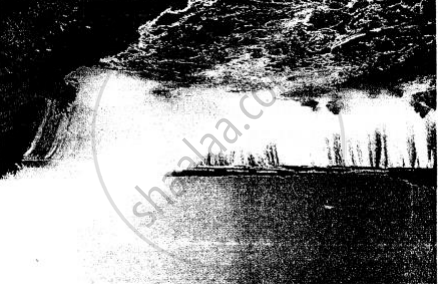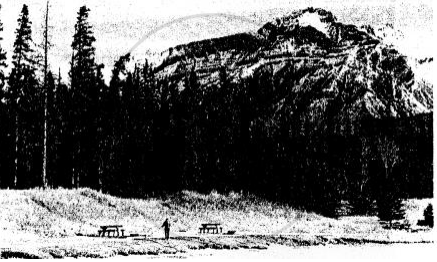Advertisements
Chapters
2: Elements of a Map
3: Major Landforms of the Earth
4: Major Water Bodies
5: Types of Agriculture
6: Major Crops
7: Minerals and Ores Exercises
8: North America: Location, Area, Political and Physical Features
▶ 9: North America: Climate, Natural Vegetation, Wildlife; Mineral and Power Resources
10: South America: Location, Area, Political and Physical Features
11: South America: Climate, Natural Vegetation, Wildlife; Mineral and Power Resources
![Oxford University Press solutions for Voyage Geography [English] Class 6 chapter 9 - North America: Climate, Natural Vegetation, Wildlife; Mineral and Power Resources Oxford University Press solutions for Voyage Geography [English] Class 6 chapter 9 - North America: Climate, Natural Vegetation, Wildlife; Mineral and Power Resources - Shaalaa.com](/images/voyage-geography-english-class-6_6:095a8c00096845b1b8d5a92e89bd5fd3.jpg)
Advertisements
Solutions for Chapter 9: North America: Climate, Natural Vegetation, Wildlife; Mineral and Power Resources
Below listed, you can find solutions for Chapter 9 of CISCE Oxford University Press for Voyage Geography [English] Class 6.
Oxford University Press solutions for Voyage Geography [English] Class 6 9 North America: Climate, Natural Vegetation, Wildlife; Mineral and Power Resources Exercise
Fill in the blank with the correct answer
The northern parts of North America are ______ than the southern parts.
Fill in the blank with the correct answer
The ______ cause rain throughout the year along the north-west coast in the northern part of North America
Fill in the blank with the correct answer
The ______ warms the Alaskan Coast and keeps it frost-free in winter
Fill in the blank with the correct answer
The tropical regions mainly experience rainfall in the ______ season
Fill in the blank with the correct answer
The prairies are a vast stretch of ______ grasses.
Match the following.
| A | B | ||
| 1. | tundra | i. | hardwood and softwood trees |
| 2. | coniferous trees | ii. | bison |
| 3. | praires | iii. | softwood trees |
| 4. | mixed forests | iv. | cactus, lizards and scorpions |
| 5. | deciduous trees | v. | monkeys and reptiles |
| 6. | mediterranean vegetation | vi. | mosses and lichens |
| 7. | desert | vii. | hardwood trees |
| 8. | tropical rainforests | viii. | olive and citrus fruit trees |
Select the appropriate term from the list given below to fill in the blank after the statement.
An extremely cold region which is treeless, ______.
the prairies
chaparral
the taiga
the tundra
Mediterranean climate
Select the appropriate term from the list given below to fill in the blank after the statement.
A vast stretch of coniferous forests in the cool temperate latitudes, ______.
the prairies
chaparral
the taiga
the tundra
Mediterranean climate
Select the appropriate term from the list given below to fill in the blank after the statement.
The only climate in North America which gets winter rain. ______.
the prairies
chaparral
the taiga
the tundra
Mediterranean climate
Select the appropriate term from the list given below to fill in the blank after the statement.
Grasslands where the bison are nearing extinction. ______.
the prairies
chaparral
the taiga
the tundra
Mediterranean climate
Select the appropriate term from the list given below to fill in the blank after the statement.
The scrub-like vegetation found in coastal California. ______.
the prairies
chaparral
the taiga
the tundra
Mediterranean climate
Differentiate between: Cool temperate east coast and west coast climates
Differentiate between: Warm temperate west coast and east coast climates
Differentiate between: Deciduous and coniferous vegetation
How does the latitudinal extent of North America affect its climate?
Identify the winds that bring summer rainfall and winter rainfall to North America.
Why does the Alaskan Coast remain frost-free in the winter season?
Which areas of North America experience the cool temperate or mid-latitude continental type of climate?
Name the type of natural vegetation found in the areas of North America experience the cool temperate or mid-latitude continental type of climate
Bring out the difference between the wildlife of the tropical and taiga forests of North America
Name the areas of important coal deposits in North America
How do the mountain ranges affect the climate of North America?
Write about the climatic characteristics of the hot desert type of climate in North America
The vegetation of North America is closely related to the climatic conditions. Explain this statement and give examples from any two regions.
Where are the prairies situated?
What are the major human activities in the prairies?
Describe the climate and vegetation of the Mediterranean climate region of North America.
What is natural gas?
What are the uses of natural gas?
North America has vast water power resources. Explain.
This is a photograph of the coniferous forests in North America
Where in North America is this variety of trees found?

This is a photograph of the coniferous forests in North America
How do the animals of this region protect themselves from extreme temperatures?

This is a photograph of a famous waterfall in North America
Name the waterfall seen in the picture.

This is a photograph of a famous waterfall in North America
Which countries get hydroelectricity from this waterfall?

Solutions for 9: North America: Climate, Natural Vegetation, Wildlife; Mineral and Power Resources
![Oxford University Press solutions for Voyage Geography [English] Class 6 chapter 9 - North America: Climate, Natural Vegetation, Wildlife; Mineral and Power Resources Oxford University Press solutions for Voyage Geography [English] Class 6 chapter 9 - North America: Climate, Natural Vegetation, Wildlife; Mineral and Power Resources - Shaalaa.com](/images/voyage-geography-english-class-6_6:095a8c00096845b1b8d5a92e89bd5fd3.jpg)
Oxford University Press solutions for Voyage Geography [English] Class 6 chapter 9 - North America: Climate, Natural Vegetation, Wildlife; Mineral and Power Resources
Shaalaa.com has the CISCE Mathematics Voyage Geography [English] Class 6 CISCE solutions in a manner that help students grasp basic concepts better and faster. The detailed, step-by-step solutions will help you understand the concepts better and clarify any confusion. Oxford University Press solutions for Mathematics Voyage Geography [English] Class 6 CISCE 9 (North America: Climate, Natural Vegetation, Wildlife; Mineral and Power Resources) include all questions with answers and detailed explanations. This will clear students' doubts about questions and improve their application skills while preparing for board exams.
Further, we at Shaalaa.com provide such solutions so students can prepare for written exams. Oxford University Press textbook solutions can be a core help for self-study and provide excellent self-help guidance for students.
Concepts covered in Voyage Geography [English] Class 6 chapter 9 North America: Climate, Natural Vegetation, Wildlife; Mineral and Power Resources are A Brief Idea of the Formation of Continents, North America : Climate, North America: Natural Vegetation, North America: Wildlife, North America: Mineral and Power Resources.
Using Oxford University Press Voyage Geography [English] Class 6 solutions North America: Climate, Natural Vegetation, Wildlife; Mineral and Power Resources exercise by students is an easy way to prepare for the exams, as they involve solutions arranged chapter-wise and also page-wise. The questions involved in Oxford University Press Solutions are essential questions that can be asked in the final exam. Maximum CISCE Voyage Geography [English] Class 6 students prefer Oxford University Press Textbook Solutions to score more in exams.
Get the free view of Chapter 9, North America: Climate, Natural Vegetation, Wildlife; Mineral and Power Resources Voyage Geography [English] Class 6 additional questions for Mathematics Voyage Geography [English] Class 6 CISCE, and you can use Shaalaa.com to keep it handy for your exam preparation.
